#jean d'eaubonne
Explore tagged Tumblr posts
Text





Charade (1963)
Director: Stanley Donen DOP: Charles Lang Art Direction: Jean d'Eaubonne
#cinematography#film stills#visual storytelling#charade#charade 1963#stanley donen#audrey hepburn#cary grant#60s films#60s cinema#60s fashion#1960s
99 notes
·
View notes
Photo

Simone Simon and Daniel Gélin in Le Plaisir (Max Ophüls, 1952)
Cast: Claude Dauphin, Gaby Morlay, Madeleine Renaud, Ginette Leclerc, Mila Parély, Danielle Darrieux, Pierre Brasseur, Jean Gabin, Jean Servais, Daniel Gélin, Simone Simon, Paul Azaïs. Screenplay: Jacques Natanson, Max Ophüls, based on stories by Guy de Maupassant. Cinematography: Philippe Agostini, Christian Matras. Production design: Jean d’Aubonne. Film editing: Léonide Azar. Music: Joe Hajos.
Pleasure, as the poets never tire of telling us, is inextricable from pain. Le Plaisir is an anthology film dramatizing three stories by Guy de Maupassant that center on what has been called the pleasure-pain perplex. An elderly man nearly dances himself to death in an attempt to recapture his youth. The patrons of a brothel quarrel and even come to blows when they discover that it is closed. An artist marries his mistress to atone for his cruelty to her. Max Ophüls brings all of his elegant technique to the stories, including his characteristic restless camera, which prowls around the wonderful sets by Jean d'Eaubonne, who received a well-deserved Oscar nomination for art direction. It's also, like Ophuls's La Ronde (1950), an all-star production -- if your stars are French. Claude Dauphin plays the doctor who treats the youth-seeking dancer; Madeleine Renaud is the madame of the brothel, Danielle Darrieux is one of her "girls," and Jean Gabin plays the madame's brother, who invites her to bring the girls to the country for his daughter's first communion, hence the temporary closure of the brothel; Daniel Gélin is the artist, Simone Simon his model/mistress, and Jean Servais his friend who also narrates the final section. Of the three segments of the film, the middle one is the longest and I think the most successful, moving from the raucous opening scene in which the men of the small Normandy town discover the brothel closed into a comic train ride to the country, which is as fetchingly pastoral a setting as you could wish. The sequence climaxes with the filles de joie dissolving in tears at the first communion -- the little church in which it takes place is one of d'Eaubonne's most inspired sets -- then returning to town and a joyous welcome. Ophuls never lets us inside the brothel: We see it only as voyeurs, through the windows. Nothing of this segment is "realistic" in the least, making the melancholy first and last segments more important in establishing the film's theme and tone. The first segment does its part to set up the course of the film as a whole, beginning with a riotous opening as tout Paris flocks to the opening of a dance hall, a pleasure palace, followed by scenes of lively dancing, then the collapse of the elderly patron, who is wearing a frozen and rather creepy mask of youth, and concluding with the bleakness of his normal existence, tended by his aging wife, who is fittingly played by Gaby Morlay, once a silent film gamine. The final segment is the bleakest of all, as the film concludes with the artist pushing his wheelchair-bound wife along the seashore, penance for having provoked her suicide attempt.
12 notes
·
View notes
Text
Cast: Cary Grant, Audrey Hepburn, Walter Matthau, James Coburn, George Kennedy, Ned Glass, Dominique Minot, Jacques Marin. Screenplay: Peter Stone, Marc Behm. Cinematography: Charles Lang. Art direction: Jean d'Eaubonne. Music: Henry Mancini.









She batted them pretty little eyes at you, and you fell for it like an egg from a tall chicken!
CHARADE 1963, dir. Stanley Donen
1K notes
·
View notes
Photo
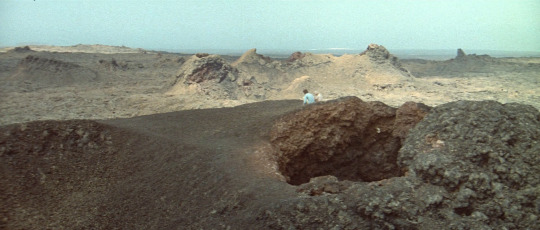
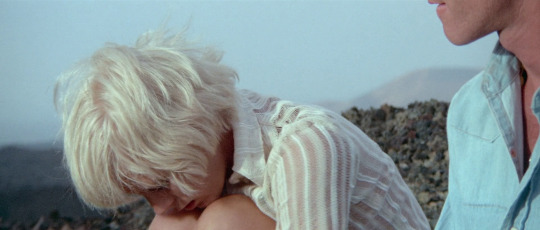
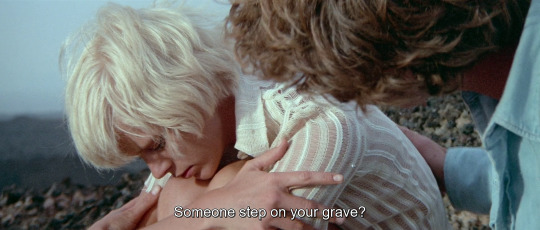
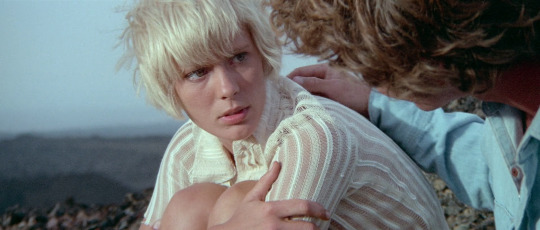
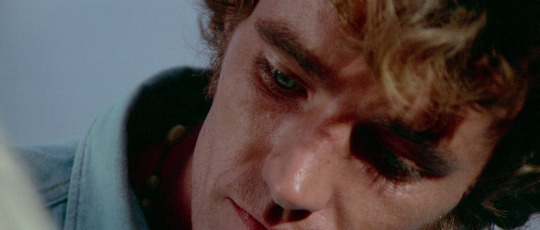
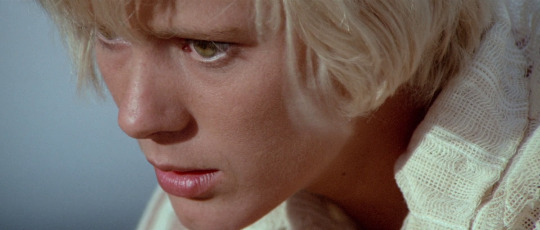
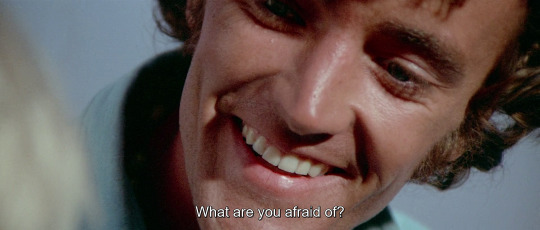

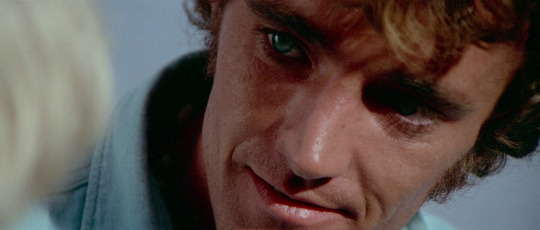
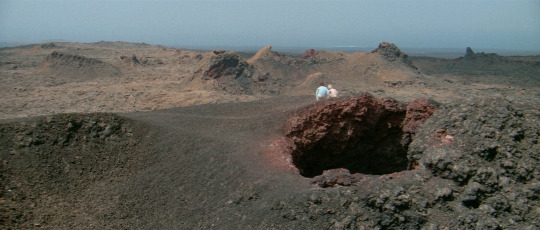
The Road to Salina (Georges Lautner, 1970).
#the road to salina#la route de salina#georges lautner#mimsy farmer#robert walker jr.#maurice cury#maurice fellous#michelle david#jean d'eaubonne#jean bouquin#marie-thérèse le guillochet#the road to salina (1970)#la route de salina (1970)
69 notes
·
View notes
Photo










Orpheus (Orphée) [1950]
Country: France
Written & Directed by: Jean Cocteau
Cinematography by: Nicolas Hayer
Edited by: Jacqueline Sadoul
Music by: Georges Auric
Production Design by: Jean d’Eaubonne
#Orpheus#Orphée#Movie#France#Jean Cocteau#Nicolas Hayer#Jacqueline Sadoul#Georges Auric#Jean d'Eaubonne#The Criterion Collection#DisCina International#Home Vision Entertainment#1950s#Fantasy#Drama#Romance
0 notes
Photo

Maquette de décors au fusain et pastel de Jean d'Eaubonne pour le film "Le Plaisir" de Max Ophüls (1952) à l'exposition "Montmartre, Décor de Cinéma" au Musée Montmartre, Paris, septembre 2017.
2 notes
·
View notes
Text
Agnès Buzyn dévoile les pilotes en charge des cinq chantiers de transformation du système de santé
La ministre des Solidarités et de la Santé, Agnès Buzyn, lance ce 9 mars les travaux de transformation du système de santé, ouvrant la concertation qui doit aboutir d'ici fin mai sur de premières orientations. Les responsables des cinq chantiers (qualité et pertinence des soins, financement, numérique, RH, organisation territoriale) sont désignés.
Dans la droite ligne des annonces effectuées le 13 février denier à Eaubonne (Val-d'Oise) par le Premier ministre, Édouard Philippe, au côté de la ministre des Solidarités et de la Santé, Agnès Buzyn, les travaux de transformation du système de santé sont désormais lancés. La ministre a en effet présenté le 9 mars lors d'une conférence de presse les responsables des cinq chantiers annoncés (qualité, financement, numérique, ressources humaines, organisation territoriale). Destinataires pour chacun d'une lettre de mission d'Agnès Buzyn (à télécharger ci-contre), ces "pilotes" seront chargés de coordonner les consultations qui devront aboutir à de premières orientations à la fin du mois de mai (lire encadré).
Trois pilotes, dont la HAS, sur la qualité
Le chantier sur la qualité et la pertinence des soins est confié à Dominique Le Guludec, présidente de la Haute Autorité de santé (HAS), Olivier Lyon-Caen, médecin-conseil national de l’Assurance maladie et Alain-Michel Ceretti, président de France Assos Santé.
Cardiologue et professeur des universités-praticien hospitalier (PU-PH) en biophysique et médecine nucléaire à l'hôpital Bichat-Claude-Bernard (Assistance publique-hôpitaux de Paris), le Pr Dominique Le Guludec a été nommée présidente de la HAS en décembre 2017, succédant à Agnès Buzyn. Le Pr Olivier Lyon-Caen, neurologue et PU-PH, est devenu le médecin-conseil national de la Cnamts en juillet 2017. Il avait auparavant été conseiller pour la santé et la recherche de l'ancien président de la République, François Hollande, tout au long de son quinquennat (2012-2017). Enfin, Alain-Michel Ceretti est devenu le premier président de France assos santé en mai 2017, après avoir été conseiller santé du Défenseur des droits. L'un des autres pilotes présenté ce 9 mars avait d'ores et déjà été désigné en février lors du déplacement gouvernemental à l'hôpital Simone-Veil d'Eaubonne (GHI Eaubonne-Montmorency). Il s'agit du responsable du chantier sur le financement, Jean-Marc Aubert, actuellement à la tête de la Direction de la recherche, des études, de l’évaluation et des statistiques. Il travaillera "en lien avec le rapporteur du conseil de l’innovation en santé et l’Assurance maladie".
Un ex-conseiller social de Manuel Valls aux RH
Aurélien Rousseau, président-directeur général de la Monnaie de Paris, se voit confier pour sa part le chantier sur les ressources humaines, afin de "proposer un nouveau contrat social aux professionnels de santé, renforçant le dialogue social, en cohérence avec les orientations du comité interministériel de la transformation publique". Le volet formation, qui fera l’objet d’un pilotage propre sera annoncé prochainement par Agnès Buzyn et la ministre de l’Enseignement Supérieur, de la Recherche et de l’Innovation, Frédérique Vidal.
PDG de la Monnaie de Paris depuis avril 2017, Aurélien Rousseau a commencé sa carrière comme professeur d’histoire en Seine-Saint-Denis. Il intègre ensuite le Conseil d’État à sa sortie de l’École nationale d'administration (Ena), avant de rejoindre la mairie de Paris, où il est notamment nommé en 2012 directeur adjoint du cabinet du maire, Bertrand Delanoë. En 2015, il devient directeur adjoint du cabinet et conseiller social du Premier ministre, Manuel Valls, puis de son successeur, Bernard Cazeneuve.
Les travaux sur le numérique reviennent à Dominique Pon, président de Santé-Cité, et Annelore Coury, directrice déléguée à la gestion et à l'organisation des soins à la Caisse nationale de l’assurance maladie des travailleurs salariés (Cnamts).
Ingénieur de formation, diplômé de l'Institut national des télécommunications d'Évry (Sup'Telecom), Dominique Pon est directeur général (DG) de la Clinique Pasteur de Toulouse (Haute-Garonne) depuis 2011. Il a été élu à la présidence du groupe coopératif de cliniques indépendantes Santé-Cité en janvier 2016. Annelore Coury, ancienne élève de l'Ena et membre de l'Inspection générale des affaires sociales (Igas), a rejoint la Cnamts comme directrice déléguée en septembre 2017, après avoir travaillé dans différentes administrations ministérielles.
Des directeurs d'ARS sur l'organisation territoriale
Enfin, les travaux sur l'organisation territoriale (liens ville-hôpital-médico-social, gradation des soins, virage ambulatoire) sont placés sous la responsabilité de Pierre Pribile, DG de l’ARS Bourgogne Franche-Comté et Norbert Nabet, DG adjoint (DGA) de l’ARS Provence-Alpes-Côte d’Azur (Paca).
Pierre Pribile est à la tête de l'ARS Bourgogne-Franche-Comté depuis fin 2016. Ingénieur des mines de formation, il était auparavant conseiller au cabinet du Premier ministre Manuel Valls à la protection sociale, à la lutte contre la pauvreté et aux comptes sociaux. Norbert Nabet est DGA de l'ARS Paca depuis la préfiguration de l'agence, puis sa création en 2010. Diplômé de l'institut d'études politiques (IEP) de Paris et docteur en médecine, il a également été conseiller technique (2007-2009) au sein du cabinet du ministre de la Santé de l'époque, Roselyne Bachelot.
Trois formes de consultations mises en place
Afin "d'impliquer dans cette réflexion l'ensemble des parties prenantes et de s'adapter aux spécificités de chaque chantier", les consultations prendront trois formes :
des consultations patients-professionnels, sous forme de "groupes qualitatifs qui produiront un rapport de solutions" ;
treize consultations territoriales thématiques, sous l’égide des ARS, en liaison avec les conférences régionales de la santé et de l’autonomie (CRSA) ;
des consultations nationales institutionnelles seront menées par les pilotes, avec les syndicats, fédérations et associations.
Les réflexions issues des consultations permettront de formaliser "pour la fin du mois de mai pour chacun des groupes une feuille de route opérationnelle, qui sera soumise à une concertation".
0 notes
Photo

Architectural models on film: Lola Montès (Max Ophüls, 1955) l Production design by Jean d'Eaubonne
3 notes
·
View notes
Text




Charade (1963)
Director: Stanley Donen DOP: Charles Lang Art Direction: Jean d'Eaubonne
#cinematography#film stills#visual storytelling#charade#charade 1963#stanley donen#audrey hepburn#cary grant#walter matthau#60s films#60s cinema#1960s
19 notes
·
View notes
Photo

Gérard Philipe in La Ronde (Max Ophüls, 1950)
Cast: Anton Walbrook, Simone Signoret, Serge Reggiani, Simone Simon, Daniel Gëlin, Danielle Darrieux, Fernand Gravey, Odette Joyeux, Jean-Louis Barrault, Isa Miranda, Gérard Philipe. Screenplay: Jacques Natason, Max Ophüls, based on a play by Arthur Schnitzler. Cinematography: Christian Matras. Production design: Jean d’Eaubonne. Film editing: Léonide Azar. Music: Oscar Straus.
Love supposedly makes the world go around, but in La Ronde it's sex that provides the spin. Max Ophüls and his fellow screenwriter, Jacques Natanson, put us in the hands of a narrator (Anton Walbrook) who facilitates the couplings of the various characters, beginning with a prostitute and a soldier, followed by the soldier's liaison with a chambermaid, her fling with the young man for whom she works, his with a married woman, and so on, until the merry-go-round (a literal presence on the screen) brings us back again to the prostitute. It's an ingenious business, first devised for the stage by the Viennese playwright Arthur Schnitzler in 1897 -- one reason why the film takes place in Vienna in 1900. At its best, La Ronde is a showcase for some lovely performances, including Walbrook's, but also those of Simone Signoret as the prostitute, Simone Simon as the chambermaid, Danielle Darrieux as the married woman, and, later in the circle dance, Jean-Louis Barrault as a pretentious poet. There are some witty moments: When one of the characters experiences erectile dysfunction, the merry-go-round breaks down and the narrator-facilitator is forced to repair it. In 1950, the movie taught American audiences who got a chance to see it what they were missing because of the hidebound Production Code. The Academy, whose members often chafed against the Code, honored it with two Oscar nominations: Ophüls and Natanson for their screenplay and Jean d'Eaubonne for art direction. Ophüls has a little fun with the censors, too, when one very close encounter is interrupted by the narrator seizing the film and cutting a section from it. Our age, haunted by various STD's, might take a darker view of the film's blithe copulation, which is why, I think, Ophüls's film seems a little hollow: too much style, not enough substance. Even in its day, La Ronde was little more than a charming anachronism, a fantasia about a world that never was, and if it had been, would have been swept away by two World Wars.
9 notes
·
View notes
Photo
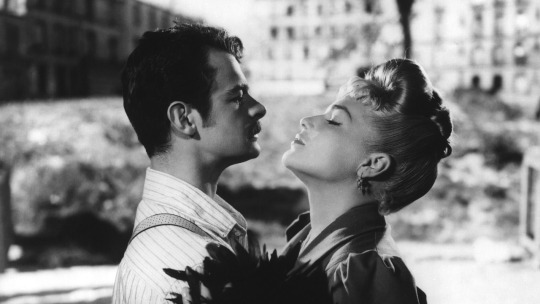
Serge Reggiani and Simone Signoret in Casque d'Or (Jacques Becker, 1952)
Cast: Simone Signoret, Serge Reggiani, Claude Dauphin, Raymond Bussières. Odette Barency, Loleh Bellon, Solange Certain, Daniel Mendaille, Dominique Davray, William Sabatier. Screenplay: Jacques Becker, Jacques Companéez. Cinematography: Robert Lefebvre. Production design: Jean d’Aubonne. Film editing: Marguerite Renoir. Music: Georges Van Parys.
A gangster movie/love story set in the underworld of Paris at the start of the 20th century, Casque d'Or feels slight, but its images have a way of tantalizing you. Perhaps that's because it evokes paintings like Pierre-Auguste Renoir's Dance at Bougival and Luncheon of the Boating Party. Jacques Becker began his career as an assistant to Pierre-Auguste's son, Jean Renoir, so it's easy to guess that there's an element of hommage in Becker's film. (Jean Renoir's wife, Marguerite, also worked as Becker's film editor.) The film's title, which translates as "golden helmet," is a reference to the blond hair of Marie (Simone Signoret), whom we first see as part of a boating party that lands at a riverside dance hall. Marie is the mistress of the gangster Roland (William Sabatier), but they're clearly not getting along. So when a stranger, Georges Manda (Serge Reggiani), joins the company at the dance hall, Marie begins to flirt with him. Meanwhile, the head of the criminal syndicate of which Roland is a part, Félix Leca (Claude Dauphin), is also making a play for Marie. Georges is an ex-con, trying to go straight as a carpenter, but he is drawn into a fatal involvement with Marie. The performances of Signoret, Reggiani, and Dauphin, as well as a colorful supporting cast, carry the rather thin story a long way, greatly helped by Becker's finesse as a director. There is a real chemistry between Signoret and Reggiani, which Becker had noticed in their previous teaming as the prostitute and the soldier who set the sexual carousel turning in La Ronde (Max Ophuls, 1950). In their first dance together, which is reprised in a haunting flashback at the film's end, Georges holds Marie with one hand on her waist and the other arm hanging free at his side -- a suggestion of their innate intimacy. Later, when Georges sees her again at a café, Marie is dancing with Roland, but she keeps her gaze focused on Georges: Becker and cinematographer Robert Lefebvre execute a dizzying tour de force in following the spinning couple around the dance floor, as Marie turns to look at Georges after every spin. The evocation of the seamy side of the Belle Époque is greatly aided by the production design by Jean d'Eaubonne and the costumes by Mayo (né Antoine Malliarakis).
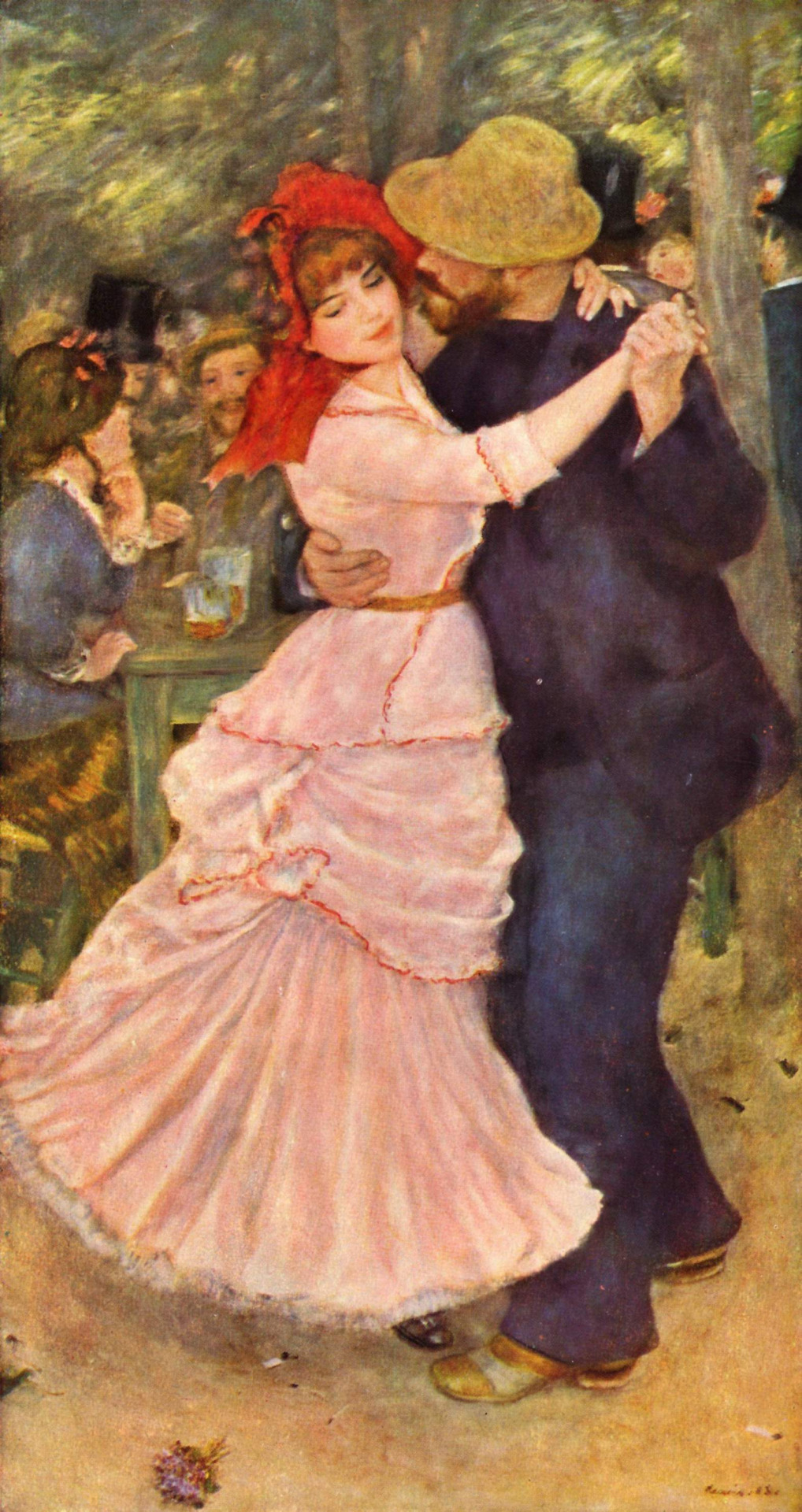
Pierre-Auguste Renoir, Dance at Bougival

Pierre-Auguste Renoir, Luncheon of the Boating Party
5 notes
·
View notes
Photo

Martine Carol and Peter Ustinov in Lola Montès (Max Ophüls, 1955)
Cast: Martine Carol, Peter Ustinov, Anton Walbrook, Henri Guisol, Lise Delamare, Paulette Dubost, Oskar Werner, Jean Galland, Will Quadflieg, Héléna Manson. Screenplay: Max Ophüls, Annette Waldemant, Jacques Natanson. Cinematography: Christian Matras. Production design: Jean d’Aubonne. Film editing: Madeleine Gug. Music: Georges Auric.
A commercial disaster when it was released, Max Ophüls's opulent and expensive last film was heavily cut in a effort to salvage it, and after the director's death -- a little more than a year after its premiere -- it suffered from neglect. But it had hugely influential admirers among the Cahiers du cinéma set, French New Wave directors such as François Truffaut, and American auteur theorists like Andrew Sarris. The persistence of the cult of Lola Montès has resulted in a restoration of the film to something like what audiences once saw (and rejected): a giddy, dreamlike tale of the rise and fall of a fabulous 19th-century courtesan, mistress to Franz Liszt (Will Quadflieg) and King Ludwig I of Bavaria (Anton Walbrook), among perhaps many others. Martine Carol is Lola, and her story is told by the ringmaster (Peter Ustinov) of a circus in which she is the principal attraction. Ophüls pulled out all the stops, including rather garish Eastmancolor and an unusually restless use of CinemaScope. The camera, supervised by cinematographer Christian Matras, rarely stands still, meandering among the many layers of the sets designed by Jean d'Eaubonne -- every building, from the humblest inn to the most baroque castle, seems to have endless flights of stairs connecting its many stories. There is a kind of feverish fun to the whole thing, as long as you're not interested in the real Lola Montez, who didn't wind up in a cage as a long queue of circus-going men waited to kiss her. You can say it's a kind of meditation on the nature of celebrity or on the double standard that judges women's sexuality in a different way than men's. You can see Lola as a precursor of Marilyn Monroe -- the goddess of the era in which the movie was made. Or you can just sit back and experience the astonishing flow of images that Ophuls directs past us. Is it a great film? I'd be content with just calling it unique, which in an artistic medium like the movies, so dependent on the tried and true, is perhaps greatness enough.
2 notes
·
View notes
Photo

Charles Boyer and Danielle Darrieux in Madame de... (Max Ophüls, 1953)
Cast: Charles Boyer, Danielle Darrieux, Vittorio De Sica, Jean Debucourt, Jean Galland, Mireille Perrey, Paul Azaïs, Josselin, Hubert Noël, Lia Di Leo. Screenplay: Marcel Achard, Max Ophüls, Annette Wademant. Cinematography: Christian Matras. Production design: Jean d’Aubonne. Film editing: Borys Lewin. Music: Oscar Straus, Georges Van Parys.
Madame de... begins in farce and ends in tragedy. In America, the title became The Earrings of Madame de..., but that puts the emphasis on what is, in effect, merely a MacGuffin. The earrings were given to Countess Louise de... (Danielle Darrieux) by her husband, General André de... (Charles Boyer), on their wedding day. (Their full surname is coyly hidden throughout the film: A sound blots out the latter part of the name when it is spoken, and it is hidden by a flower when it appears on a place card at a banquet. The effect is rather like a newspaper gossip column trying to avoid a libel suit when reporting a scandal among the aristocracy.) The scandal is set in motion when Louise, a flirtatious woman with many admirers, decides to sell the earrings to pay off the debts she wants to hide from André. Their marriage has obviously come to a pause: Though they remain affectionate with each other, they have separate bedrooms and at night they talk to each other through doors that open on a connecting room. Louise takes the earrings to the jeweler (Jean Debucourt) from whom André originally purchased them. But when she tries to persuade André that she lost them at the opera and the "theft" is reported in the newspapers, the jeweler tries to sell them back to the general. To put an end to the business, André pays for them, then presents them to his mistress, Lola (Lia Di Leo), as a parting gift: Their affair over, she is leaving for Constantinople. There, Lola gambles them away, but they are bought by an Italian diplomat, Baron Donati (Vittorio De Sica), who is on his way to a posting in Paris. And of course Donati meets Louise, they fall in love, and he presents the earrings to her as a gift. Recognizing them, she has no recourse but to hide them, but they will resurface with fatal results. How Max Ophüls gradually shades this plot from a situation suited to a Feydeau farce into a poignant conclusion is a part of the film's magic. It depends to a great extent on the superb performances of Darrieux, Boyer, and De Sica, but also on Ophuls's typically restless camera, handled by cinematographer Christian Matras, as it explores Jean d'Eaubonne's elegant fin de siècle sets. Much depends, too, on the film editor, Borys Lewin, who helps Ophüls accomplish one of the movies' great tours de force, following Louise and Donati as they dance what appears to be an extended waltz but gradually shows itself to be several waltzes taking place over the period of time in which they fall in love. It's a cinematic showpiece, but it's fully integrated into what has to be one of the great movies.
2 notes
·
View notes
Photo

Walter Matthau and Audrey Hepburn in Charade (Stanley Donen, 1963) Cast: Cary Grant, Audrey Hepburn, Walter Matthau, James Coburn, George Kennedy, Ned Glass, Dominique Minot, Jacques Marin. Screenplay: Peter Stone, Marc Behm. Cinematography: Charles Lang. Art direction: Jean d'Eaubonne. Music: Henry Mancini. Charade was dismissed in its day as a pleasant but derivative entertainment, with touches of Hitchcock and a bit of James Bond in the mix, a film that would be nothing without its star teaming of Audrey Hepburn and Cary Grant. It would also inspire other star-teamed romantic adventures with one-word titles, like Warren Beatty and Susannah York in Kaleidoscope (Jack Smight, 1966) and Shirley MacLaine and Michael Caine in Gambit (Ronald Neame, 1966), and Charade's director, Stanley Donen, would even repeat the formula with Gregory Peck and Sophia Loren in Arabesque (1966). But Charade has survived today as a classic when the others have mostly been forgotten. The star teaming has a lot to do with it, of course: Who doesn't want to see the two most charming people in the world together? Owing to Grant's genetic gift for looking much younger than he was, even the 25-year age difference between Grant and Hepburn only slightly tests the limits of what one can accept in a romantic pairing.* But the film also makes sly references to the difference in their ages, and wisely makes Hepburn's character into the more active one in initiating a relationship. Charade also has an exceptionally witty screenplay, with Peter Stone largely responsible for the final script from the story he and Mark Behm had been unable to sell to the studios until they turned it into a novel that was serialized in Redbook magazine. And it has a near-perfect supporting cast, including three actors at turning points in their careers: Walter Matthau, James Coburn, and George Kennedy. All of them would move out of television and into the movies after Charade, and all three would win Oscars for their work. And in Stanley Donen it had a director whose lightness of touch had been honed in MGM musicals, including the greatest of them all, Singin' in the Rain (1952). *Compare, for example, the similar age gap between James Stewart and Kim Novak in Bell, Book and Candle (Richard Quine, 1958). After that film, Stewart gave up playing romantic leads. Grant made much the same choice: Charade was his antepenultimate film: Although he would make one more, Father Goose (Ralph Nelson, 1964), that paired him with a younger actress, Leslie Caron, in his final film, Walk, Don't Run (Charles Walters, 1966), he was the older man who serves as matchmaker to young lovers -- a role that was based on the part played by Charles Coburn in The More the Merrier (George Stevens, 1943).
0 notes
Photo










Orphée (Jean Cocteau, 1950).
#orpheus#orpheus (1950)#orphée#orphée (1950)#jean cocteau#jean marais#françois périer#nicolas hayer#jacqueline sadoul#jean d'eaubonne#albert volper#marcel escoffier
146 notes
·
View notes
Photo










The Girl on a Motorcycle (Jack Cardiff, 1968).
#the girl on a motorcycle (1968)#the girl on a motorcycle#jack cardiff#andré pieyre de mandiargues#marianne faithfull#rené guissart jr.#peter musgrave#la chica de la motocicleta#jean d'eaubonne
71 notes
·
View notes